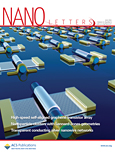
NANO LETTERS
Scope & Guideline
Transforming ideas into nanoscale realities.
Introduction
Aims and Scopes
- Nanoparticle Synthesis and Characterization:
The journal emphasizes green and sustainable methods for synthesizing nanoparticles, often utilizing biological materials and plant extracts, which are characterized for their structural, optical, and chemical properties. - Applications of Nanomaterials:
Research published in NANO LETTERS frequently explores the applications of nanomaterials in various domains, including medicine, agriculture, environmental science, and energy, showcasing their potential to enhance performance and sustainability. - Interdisciplinary Approaches:
The journal promotes interdisciplinary research that integrates nanotechnology with fields such as biotechnology, materials science, and environmental science, thus fostering innovative solutions to contemporary challenges. - Health and Biomedical Research:
A significant focus is placed on the health-related applications of nanomaterials, including drug delivery systems, biosensing platforms, and antimicrobial agents, highlighting their potential in medical therapies and diagnostics. - Sustainable Development:
NANO LETTERS is committed to sustainability, often publishing studies that address environmental concerns through the development of eco-friendly nanomaterials and their applications in waste remediation and agricultural enhancement.
Trending and Emerging
- Green and Sustainable Nanotechnology:
Recent publications highlight a robust trend towards green synthesis methods for nanoparticles, utilizing biological materials and eco-friendly processes, which aligns with global sustainability initiatives. - Nanomedicine and Drug Delivery Systems:
There is an increasing focus on the development of nanomaterials for medical applications, particularly in drug delivery and therapeutic agents, showcasing the potential of nanoparticles to improve healthcare outcomes. - Agricultural Nanotechnology:
Emerging research is focused on the use of nanomaterials to enhance agricultural practices, including crop growth, pest control, and sustainable farming techniques, reflecting a growing interest in food security and environmental sustainability. - Advanced Biosensing Technologies:
Recent advancements in biosensing platforms utilizing nanoparticles signal a trend towards more sensitive and effective detection methods for various biological and chemical analytes, reinforcing the role of nanotechnology in diagnostics. - Interdisciplinary Research Collaborations:
There is a notable trend in interdisciplinary studies that combine insights from biology, chemistry, and materials science, indicating a shift towards comprehensive approaches to solving complex scientific problems.
Declining or Waning
- Conventional Nanoparticle Synthesis Methods:
There has been a noticeable decline in studies focusing on traditional chemical synthesis methods for nanoparticles, as researchers increasingly favor greener, biosynthetic approaches that align with sustainability goals. - Basic Theoretical Studies:
Papers solely dedicated to theoretical explorations of nanomaterials, without practical applications or experimental validation, are becoming less frequent, indicating a shift towards more applied research. - Narrowly Focused Applications:
Research that concentrates on niche applications of nanomaterials, such as specific industrial processes or highly specialized fields, is waning, as broader, multidisciplinary applications gain more attention. - Non-Biocompatible Nanomaterials:
Research on non-biocompatible or toxic nanomaterials has decreased, likely due to increased awareness of safety and environmental concerns, leading to a pivot towards biocompatible and eco-friendly alternatives. - Traditional Material Science Approaches:
There is a decline in studies that apply traditional material science methodologies to nanomaterials, as the field moves towards more innovative, hybrid approaches that combine various scientific disciplines.
Similar Journals
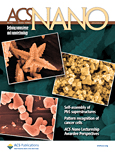
ACS Nano
Elevating Engineering through Nanoscience ExcellenceACS Nano, published by the American Chemical Society, stands as a prestigious journal in the domains of Engineering, Materials Science, Nanoscience, and Physics. With an exceptional impact factor reflecting its standing as a Q1 category journal in multiple disciplines, it plays a pivotal role in disseminating groundbreaking research from 2007 to 2024. Known for its rigorous peer-review process, the journal boasts impressive Scopus rankings—positioned at #1 in General Engineering and #6 in General Physics and Astronomy—placing it among the top 1% of journals in its field. Although it is not an open-access publication, ACS Nano provides a wealth of knowledge that is essential for advancing the development of nanotechnology and its applications across various industries. Researchers, professionals, and students alike will find in its pages a trove of innovative studies and insights that drive the future of materials science and engineering.

Nanoscale Research Letters
Catalyzing collaboration in the world of nanotechnology.Nanoscale Research Letters, published by SPRINGER, is a leading open-access journal dedicated to the rapid dissemination of innovative research in the field of nanoscience and nanotechnology. Established in 2006, this journal provides researchers and professionals with a platform to share their groundbreaking findings across a broad spectrum of applications, including condensed matter physics and materials science. With an impressive Q1 ranking in both Condensed Matter Physics and Materials Science categories as of 2023, it asserts its position as a top-tier publication within the scientific community, bolstered by a 96th percentile rank in the Scopus database. Nanoscale Research Letters not only emphasizes the importance of nanotechnology research but also ensures that its findings are widely accessible, adhering to its open-access mandate. Scholars and students alike are encouraged to contribute to and engage with this dynamic resource, fostering collaboration and innovation in the ever-evolving world of nanoscience.
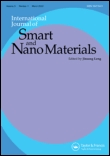
International Journal of Smart and Nano Materials
Transforming Engineering with Smart and Nano InnovationsThe International Journal of Smart and Nano Materials is a leading peer-reviewed publication in the fields of civil and structural engineering, mechanics of materials, and materials science, published by Taylor & Francis Ltd. With its notable Open Access format since 2010, this journal aims to disseminate innovative research and advancements in smart materials and nano technologies, which are crucial for the development of sustainable and efficient engineering solutions. The journal has established a strong reputation, being classified in the Q1 category for Civil and Structural Engineering and Mechanics of Materials, and ranked highly in Scopus with impressive percentiles, illustrating its impact within the academic community. Covering research from 2010 to 2024, it serves as an essential resource for researchers, professionals, and students seeking to stay at the forefront of material innovation and engineering prowess. Current access options facilitate the broad distribution of knowledge, reflecting the journal's commitment to advancing scientific inquiry and application in an increasingly nanotechnology-driven world.

BULLETIN OF MATERIALS SCIENCE
Fostering Excellence in Material Science ResearchBulletin of Materials Science, published by the Indian Academy of Sciences, is a distinguished journal that has been contributing to the field of materials science since its inception in 1979. With an ISSN of 0250-4707 and E-ISSN 0973-7669, it provides a platform for researchers to share groundbreaking studies and advancements in the mechanics of materials and general materials science. As of 2023, the journal holds a respectable Q3 ranking in both the Materials Science (miscellaneous) and Mechanics of Materials categories, highlighting its competitive position in the academic landscape. Although the journal currently does not operate under an open access model, it remains a vital resource for professionals and students keen on exploring innovative material developments and methodologies. With a commitment to promoting high-quality research, the Bulletin of Materials Science features rigorous peer-review processes, making it an essential reference for anyone engaged in the materials science domain.

ACS Nanoscience Au
Advancing the Frontiers of NanoscienceACS Nanoscience Au, published by the American Chemical Society, is a leading open-access journal dedicated to the rapidly evolving field of nanoscience. Since its inception in 2021, this journal has established itself within the top quartiles of academic publishing, ranking Q1 in both Chemistry and Materials Science for 2023. With a commitment to disseminating high-quality research, it provides a platform for innovative findings in nanomaterials, nanotechnology applications, and associated interdisciplinary studies. The journal is based in the United States and embraces an open-access model, ensuring that research is freely accessible to a global audience. This initiative not only enhances the visibility of authors' work but also facilitates collaboration across scientific domains. As a vital resource for researchers, professionals, and students alike, ACS Nanoscience Au plays a crucial role in advancing knowledge in the nanoscience community.
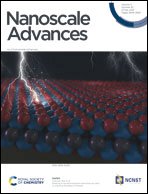
Nanoscale Advances
Innovating at the Nanoscale for Tomorrow's Solutions.Nanoscale Advances, published by the Royal Society of Chemistry, stands out as a leading open-access journal dedicated to advancing the field of nanoscience and nanotechnology since its inception in 2018. With a specialized focus on areas such as atomic and molecular physics, bioengineering, chemistry, and materials science, this journal has consistently achieved top-tier rankings across several categories, reflecting its high-impact contribution to research and innovation. Currently classified in the Q1 quartile for both Atomic and Molecular Physics and Chemistry (Miscellaneous), and Q2 for Bioengineering, its prestige is underscored by impressive Scopus rankings, including a notable 34th position in General Engineering. With its commitment to disseminating high-quality research, Nanoscale Advances serves as an invaluable resource for researchers, professionals, and students alike, fostering collaboration and scholarly exchange in the rapidly evolving landscape of nanotechnology.
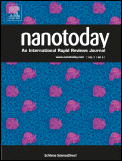
Nano Today
Catalyzing discoveries that shape tomorrow's innovations.Nano Today is a prestigious journal published by ELSEVIER SCI LTD that stands at the forefront of nanoscience and nanotechnology research. With an impact factor that underscores its significance, this journal has achieved remarkable rankings in several key categories as of 2023, including Q1 positions in Bioengineering, Biomedical Engineering, Biotechnology, Materials Science, and Pharmaceutical Science, making it an essential resource for scholars and professionals alike. ISSN 1748-0132 and E-ISSN 1878-044X, the journal serves as a vital platform for disseminating cutting-edge research findings and innovative applications in the field. Although open access options are not available, the journal's rich repository of peer-reviewed articles provides invaluable insights into the latest advancements in nanotechnologies. Based in the Netherlands, Nano Today not only connects a global network of researchers but also propels forward the conversation on the transformative potential of nanomaterials across multiple disciplines. With a commitment to advancing knowledge and fostering innovation, Nano Today is an indispensable tool for academics and practitioners dedicated to pushing the boundaries of scientific exploration.
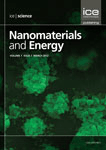
Nanomaterials and Energy
Shaping the future of energy through cutting-edge nanotechnology.Nanomaterials and Energy is a pioneering, peer-reviewed journal dedicated to advancing the field of nanotechnology and energy applications. Published by EMERALD GROUP PUBLISHING LTD from the UK, this journal serves as a vital resource for researchers, professionals, and students involved in energy innovation and materials science. With an ISSN of 2045-9831 and an E-ISSN of 2045-984X, it is indexed within Scopus and has witnessed its ranking currently placed in the Q4 category for both Energy (miscellaneous) and Materials Science (miscellaneous) for 2023, demonstrating its emerging role in these significant fields. Nanomaterials and Energy aims to explore the convergence of nanomaterials with energy systems, fostering interdisciplinary collaboration and promoting novel technologies that can address contemporary energy challenges. While not an open-access journal, it is acknowledged for its rigorous contributions to scientific knowledge, making it an essential publication for those at the forefront of energy and materials research. The journal’s accessible format and comprehensive editorial policy ensure it remains an influential platform through 2024 and beyond.
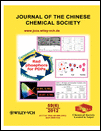
JOURNAL OF THE CHINESE CHEMICAL SOCIETY
Exploring the Frontiers of Chemical ScienceJOURNAL OF THE CHINESE CHEMICAL SOCIETY, published by WILEY-V C H VERLAG GMBH, is a vital resource in the field of chemistry, focusing on a broad array of topics pertinent to general chemistry and its advancing sub-disciplines. Established in 1954 and running through 2024, this journal serves as a significant platform for the dissemination of high-quality research, showcasing innovative findings and developments within the chemical sciences. With its Q3 category ranking and positioning at Rank #203 in General Chemistry per Scopus, it reflects the journal's commitment to research excellence and impact. While not an open-access publication, it ensures accessibility to a global audience, making it an essential tool for researchers, professionals, and students alike seeking to stay informed and engaged in the evolving landscape of chemistry.

International Journal of Nanoscience
Exploring the Frontiers of Nanoscience InnovationThe International Journal of Nanoscience, published by WORLD SCIENTIFIC PUBL CO PTE LTD, stands as a significant platform in the multidisciplinary field of nanoscience and nanotechnology, offering a unique insight into innovative research developments and applications from 2004 to 2024. Based in Singapore, this journal provides an academic space for researchers, professionals, and students to explore the latest advancements across its wide-ranging scopes, which include bioengineering, biotechnology, computer science applications, condensed matter physics, electrical engineering, and materials science. While currently categorized in Q4 quartiles across multiple fields, the journal's commitment to quality research and scholarly discourse positions it as a pivotal resource for driving forward the understanding and application of nanoscience. Despite its non-open access format, the journal invites subscriptions from institutions and individuals eager to stay ahead in this rapidly evolving discipline. By fostering an environment of collaboration and innovation, the International Journal of Nanoscience aims to contribute significantly to the body of knowledge essential for future breakthroughs in science and technology.